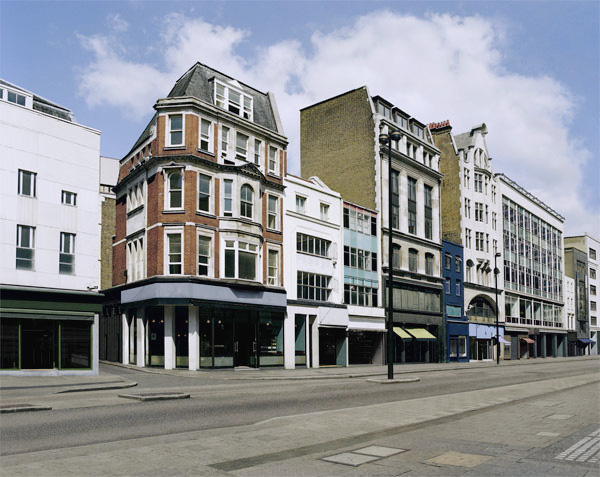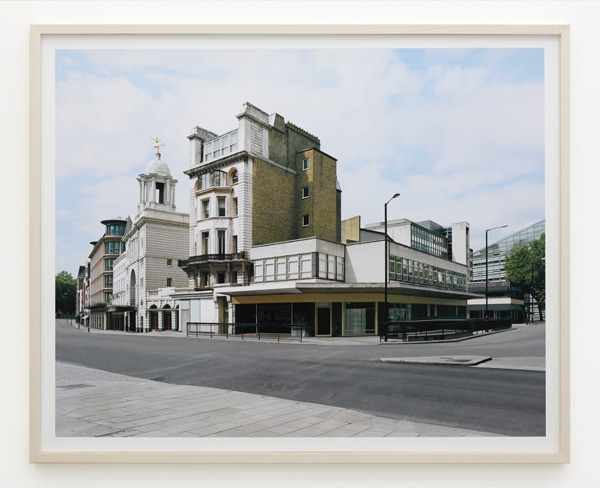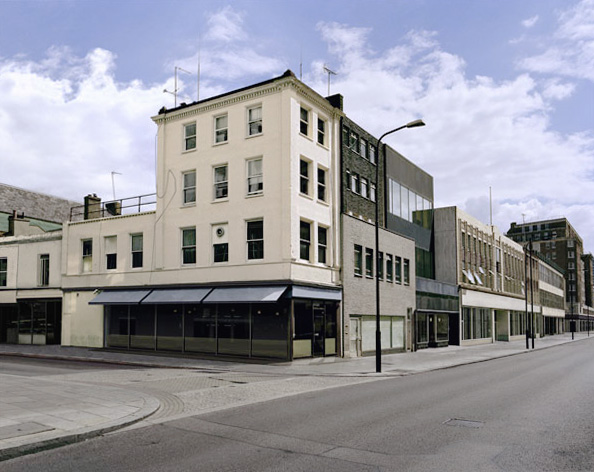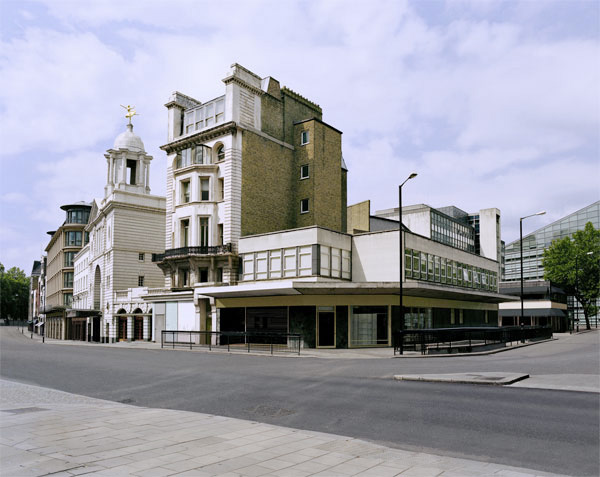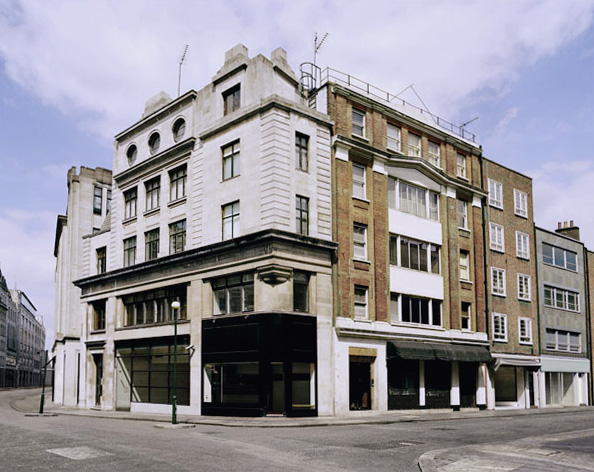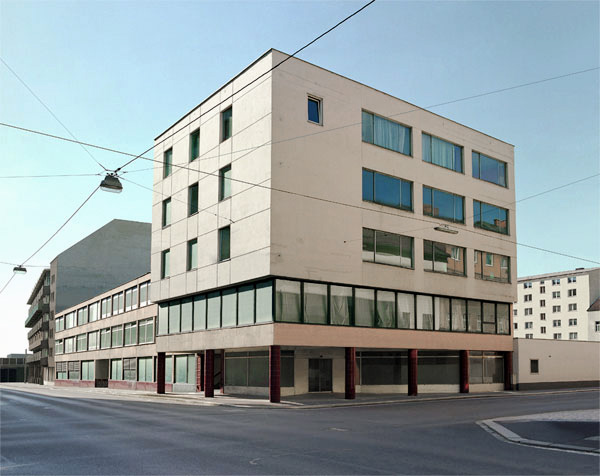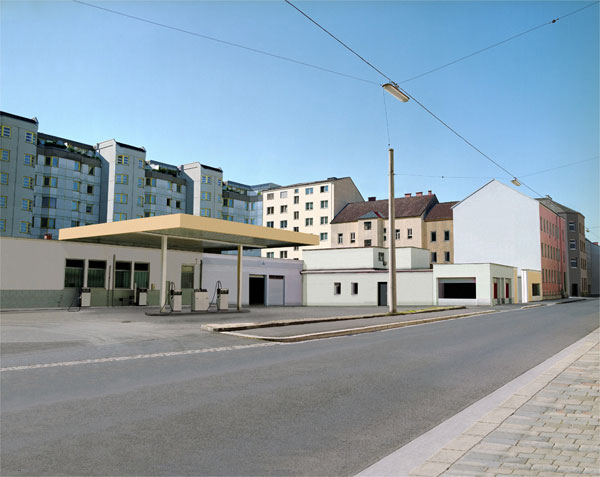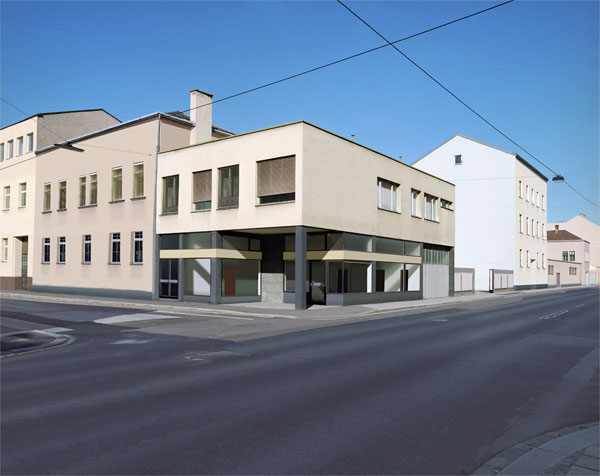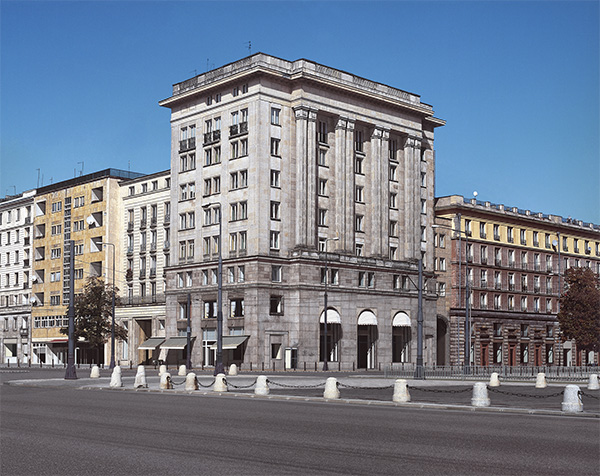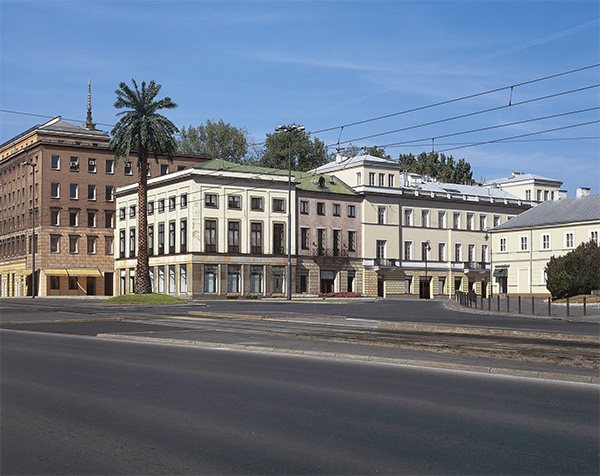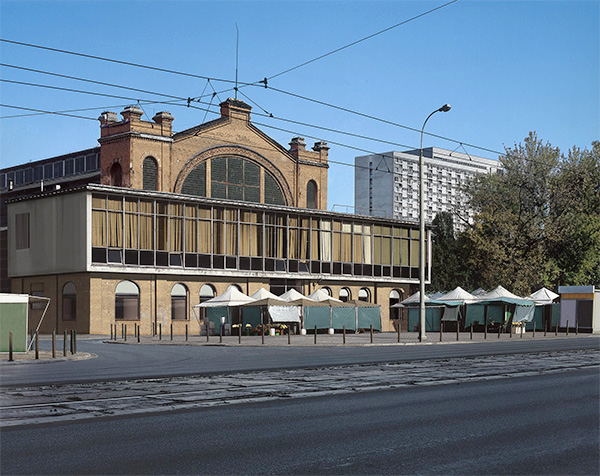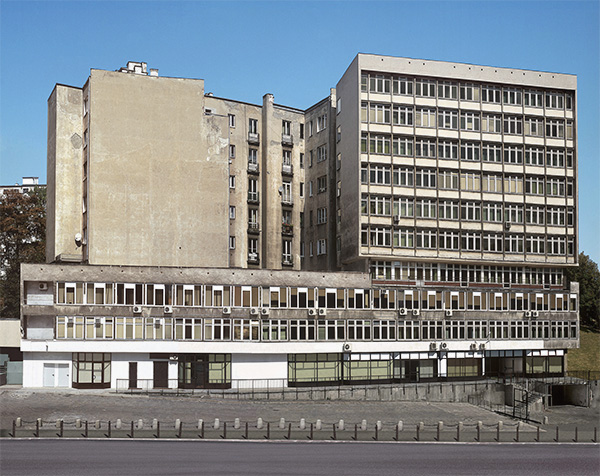Gregor
Graf draws the viewer's gaze to the city of Linz completely purged of signs. With purposely intentional
retouching, he emphasizes the architectonic and structural features of the city in an extreme way.
The streets seem unreal, culturally interchangeable and alien. They call for a new kind of perception beyond
the realm of our familiar experiences and patterns. At the same time, though, these pictures open
up a view of architecture that is otherwise blocked and "clarified" spatial systems.
Text long:
Borderline urban spaces in Linz, major thoroughfares leading in and out of the city, lined with buildings from the 50s to the 80s. Districts formerly located on the periphery that are today squeezed in between the city´s historical centre and the frayed suburban and industrial zones lying on its outskirts. These are the motifs of the four photographic works in Gregor Graf´s hidden town - verborgene Stadt series.The "stars" in these photos are are the buildings on Dinghofer, Dametz and Mozart Streets. Back in the 60s this streets were incorporated into a traffic concept that was even then reguarded as only an interim solution to get the rising number of vehicles in the city centre under control. Buildings were torn down, whole rows of houses were shifted and existing structures were were altered. These intermediaryregions became spaces dedicated efficient movement, filled with all the traffic lights and signage systems that entails.
The city as living space is today no longer shaped by the individuals who inhabit it. At the textural level - with words, symbols, logos, directional and traffic signs, commands and prohibitions-the only elements allowed are those that serve the end of law or consumption. Free expression, such as graffiti or the unauthorized hanging of posters in the public space is punishable by law. The real city is increasingly becoming a personality-drained world of corporationsand branding, coupled with the proliferation of rigorous regulations dictating how individuals are expected to behave. Modernism tried to rid architecture of ornament-advertisingand directional systems have now brought it back, under a new guise and with a new function. City centres have evolved into "literary" spaces. New technical possibilities (glass, large print, tickers, digital text production technologies, mega displays, transparent buildings) turn buildings facades into another medium for conveying nwes, with whole buildings becoming there own logo.
For hidden town - verborgene Stadt Gregor Graf applied a complicated retouching process to remove all graphic elements from his photographic images. They appear as spaces void of signs, making them seem unreal, and cultural interchangable. At the same time, they offer an undisguised view of the architectur and at the clarified spacial systems.The digital editing involved traffic signage and graphics. Signs of wear and tear, such as patina or weathering, and things that hint at human usage were deliberately left unaltered. But the cultural and communicative information we are accustomedto seeing has disappeared. An apperantly virtualized space emerges, which we are unable to reconcile with our normal visual experience. How is a city without signs, without visual regulations, without guiding graphics, perceived? How do we move through this urban construct? Do we still recognize these (non) places?
Text by Gregor Graf. Translated from German by Jennifer Taylor - Gaida
